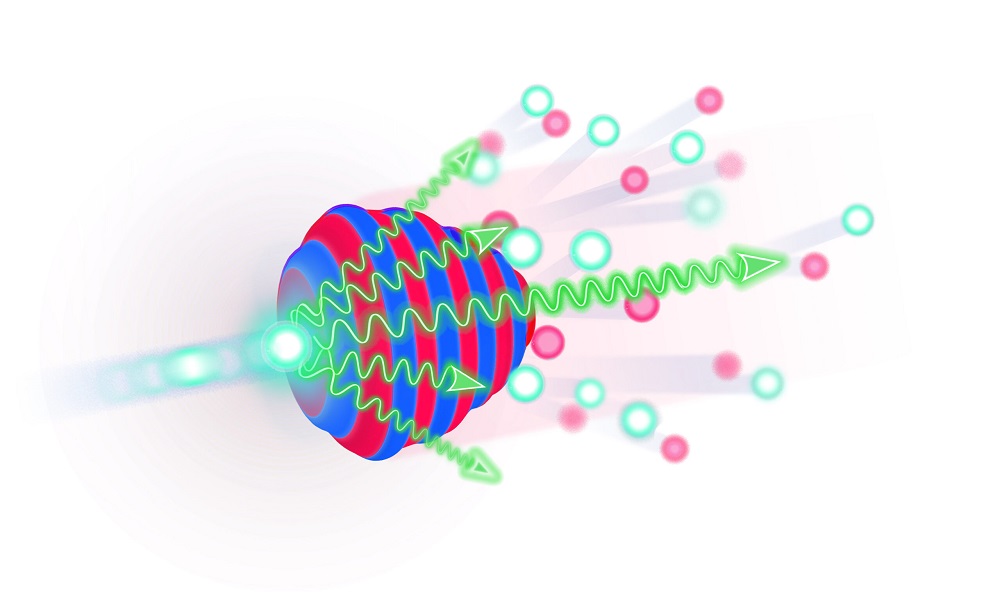The 3-petawatt (PW) ZEUS laser at the University of Michigan has been awarded $18.5 million by the NSF to establish it as a federally funded international user facility. ZEUS is expected to begin its first experiments in 2022.
ZEUS, which stands for zetawatt-equivalent ultrashort-pulse laser system, will be the most powerful laser in the U.S. Although it won’t have as much raw power as the two 10-PW lasers in Europe or the 5.3-PW laser and planned 100-PW laser in China, its approach will simulate a laser that is roughly a million times more powerful than its 3 PW.

Artist impression of ZEUS’s full-power 3-petawatt laser pulse colliding with an electron beam, creating pairs of electrons and their antiparticles, positrons, from the vacuum. This experiment will probe extreme aspects of quantum electrodynamics, the leading theory explaining the interaction of light and matter. Courtesy of Steve Alvey/University of Michigan Engineering, Communications & Marketing.
At the start of the laser’s operation, one of the three target areas will launch experiments at 0.5 PW, a sixth of its peak power. The laser will send either one or five ultrashort laser pulses per second, with each pulse lasting between 20 and 25 quadrillionths of a second, into targets made of gas — turning gas atoms into plasma. The system will gradually ramp up to full power over two years, and is scheduled to begin its signature experiments and user operations in October 2023.
The setup will eventually send the full-power laser beam into a vacuum chamber where the laser beam will be focused on a gas target with a colliding electron beam traveling in the opposite direction, simulating a much higher-power zetawatt laser. A petawatt is a quadrillion watts, or a 1 followed by 15 zeros; a zetawatt is 1 quintillion watts, or a 1 followed by 21 zeros.
ZEUS will primarily be used to study extreme plasmas. “Extreme plasma made with ‘tabletop’ laser technology offers a lower-cost alternative for fundamental research in physics compared to large-scale particle accelerators, which cost billions to build,” said Franko Bayer, project manager of the construction of ZEUS. “We are very excited since this support enables the U.S. plasma science community, and us at U-M, to make long-term research plans.”
Experiments at the facility are expected to contribute to the understanding of how the universe works at the subatomic level, how astrophysical phenomena such as jets can be produced by black holes, and how materials change on extremely fast timescales, as well as to the development of smaller and more efficient particle accelerators for medical imaging and treatment.
NSF funding will provide $1 million for the year starting in October 2021 and $5.5 million for the year starting October 2025, the last year of the award. ZEUS is expected to operate as the most powerful laser in the U.S. and as an open user facility, for at least a decade.
ZEUS will primarily be an international user facility, enabling teams from around the world to travel to U-M to run experiments. Proposals will be evaluated by an external panel of scientists and engineers. Because of the funding from the NSF, there will be no cost to users who are selected to conduct research.
“We look forward to the greatly increased capability and access to the highest intensity lasers that the NSF ZEUS user facility will provide for the U.S. and international scientific community,” said Vyacheslav “Slava” Lukin, the NSF program director for plasma physics. “From the fundamental physics of light and matter, to powerful astrophysical phenomena like blazars, to compact particle accelerators, the users of the facility will be able to explore a wide range of phenomena while pushing the frontiers of technology.”